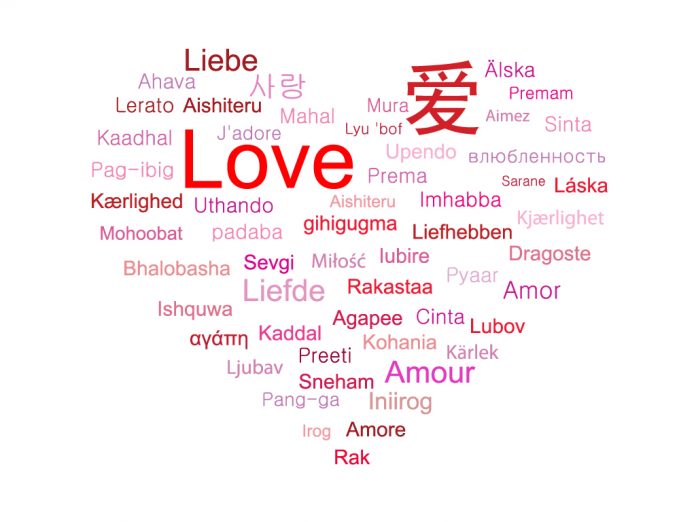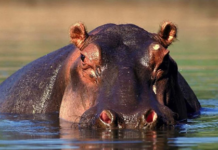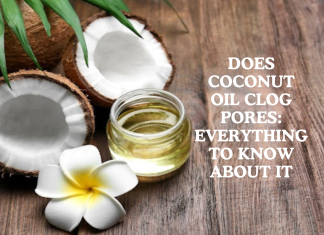Perhaps one of the coolest things about venturing to the far corners of the planet is learning a bit of the global language. Here we are talking about specifically how to say I love you in different languages in order to spread the sweet word. It is an incredible experience to share the word of love in a multilingual way with our knowledge of various languages at ones. This can also be intriguing for many people as most of us have no clue how to say I love you in 100 languages.
Content Summary
Why How to say I Love you in 100 languages is an amazing thing?
There is an astounding amount of culture you can find once you start learning any language. It tells you a lot about the region. It not only increases your verbal skills but it will also help in the expansion of your mind’s horizon as well. There’s constantly an articulation or a word that doesn’t exist in different dialects or appears to be extraordinary dependent on the aggregate attitude of that specific culture. It’s astonishing to believe that through the entirety of the years, wars, and our reality as individuals one thing remains the same. That is our strategy for expressing and utilizing the language. In the midst of all of that we have built our own capacity to cherish and rejoice it.
It is an interesting thing to think about how to say I love you in different languages around the globe. People commonly know how to say I love you I French, Spanish, German, Mandarin, Korean, and English obviously. We went a step further and explored all the languages and the different dialects in order to answer your question of how to say I love you in different languages. Here is the amazing answer to your question! How to say I love you in different languages.
So here it is, after tons of looking and research, this is the way to say I love you in different languages – to be precise, here are the 100 most communicated in dialects on the planet which we are aware of-
| 1 | Mandarin | Wǒ ài nǐ | China, Taiwan, Singapore |
| 2 | Spanish | te amo, te quiero | Hispanic America, Spain, United States, Equatorial Guinea, Western Sahara, Pacific islands |
| 3 | English | I love you | Australia, Canada, India, Ireland, New Zealand, United Kingdom, United States, South Africa, Singapore, Philippines |
| 4 | Hindi | main tumse pyar karta hoon | India, Fiji, Nepal |
| 5 | Arabic | ahabak | North Africa, Western Asia (Middle East), East Africa |
| 6 | Portuguese | eu te amo | Angola, Brazil, Cape Verde, Mozambique, Portugal, São Tomé and Príncipe, Timor-Leste |
| 7 | Bengali | Āmi tōmāẏa bhālōbāsi | Bangladesh, West Bengal (India), Tripura (India), Assam (India) |
| 8 | Russian | ya lyublyu tebya | Russia, former Republics of the Soviet Union, Mongolia |
| 9 | Japanese | watashi wa, anata o aishiteimasu | Japan |
| 10 | Punjabi | maiṁ tuhānū pi’āra karadā hāṁ | Punjab region (India, Pakistan) |
The next most spoken language is German, but ‘I love you’ in German has several layers because of the different dialects of the vast region it holds. Hence, it can be a lot more specific. For example, to tell someone you love for them more in an ‘I care for you’ kind of way, you would use ‘Ich habe dich gerne’.
Next is ‘Ich hab dich lieb’, which is kind of like, ‘I have love for you’ and is used for friends and family. Between lovers, ‘I love you is’ expressed as ‘Ich liebe dich.’
| 11 | German | ich liebe dich | Austria, Belgium (Eupen-Malmedy), Germany, Luxembourg, Liechtenstein, Switzerland, South Tirol (in Italy) |
| 12 | Javanese | Aku tresna sampeyan | Java (Indonesia) |
| 13 | Wu (Shanghainese) | (ngu eh nóng) Ngu long hushin long lah |
Zhejiang, Shanghai, southern Jiangsu (eastern China) |
| 14 | Malay/Indonesian | saya sayang awak | Indonesia, Malaysia, Brunei, Singapore |
| 15 | Korean | salanghae | North Korea, South Korea |
| 16 | Telugu | nēnu ninnu prēmistunnānu | Andhra Pradesh, Tamil Nadu, Karnataka, Puducherry (India) |
| 17 | Vietnamese | anh yêu em | Vietnam |
| 18 | French | je t’aime | Belgium (Wallonia, Brussels), Canada (particularly Quebec, New Brunswick and Eastern parts of Ontario), France, Switzerland, Francophone Africa, French Caribbean, French Polynesia, various islands in the Indian and Pacific Oceans. |
| 19 | Marathi | mī tujhyāvara prēma karatō | Maharashtra, Goa, Andhra Pradesh, Karnataka, Madhya Pradesh, Gujarat (India) |
| 20 | Tamil | nāṉ uṉṉai kātalikkiṟēṉ | Tamil Nadu, Karnataka (India), Puducherry (India), Sri Lanka, Singapore, Malaysia, Mauritius |
| 21 | Urdu | m – (mein ap say muhabat karta hoon) & f – (mein ap say muhabat karti hoon) | India, Pakistan |
| 22 | Persian/Farsi | (asheghetam) used in poetry and songs – (dūset dāram) | Iran, Afghanistan, Tajikistan |
| 23 | Turkish | seni seviyorum | Turkey, Cyprus, Bulgaria |
| 24 | Cantonese | ngóh oi néih | Guangdong (Canton), southern Guangxi (southern China), Hong Kong, Macau |
| 25 | Italian | ti amo | Italy, Switzerland, San Marino |
| 26 | Thai | P̄hm rạk khuṇ | Thailand |
| 27 | Gujarati | Huṁ tanē prēma karuṁ chu | Gujarat (India) |
28 |
Basque |
maite zaitut |
Northern Spain |
| 29 | Minnan hua | wǒ ài rǔ | Fujian, eastern part of Guandong (southeastern China), Hainan (southern China), Taiwan, Malaysia |
| 30 | Polish | kocham Cię | Poland, USA, Germany, United Kingdom, Belarus, western Ukraine, Lithuania |
| 31 | Pashto | (za la ta sara meena kawom) | Afghanistan, Pakistan |
| 32 | Kannada | Nānu ninnannu prītisuttēne | Karnataka, Tamil Nadu, Andhra Pradesh, Maharashtra (India) |
| 33 | Malayalam | ñān ninne snēhikkunnu | Kerala, Lakshadweep, Mahé (India) |
| 34 | Sundanese | abdi bogoh ka anjeun | Java (Indonesia) |
| 35 | Chamorro | Hu guiaya hao | Austronesian language spoken mainly on the island of Guam, and also in the Marianas Islands. |
| 36 | Hausa | Ina son ka | Nigeria |
There are Various Dialects of many countries so they have their own versions of how to say I love you. |
|||
| 37 | Burmese | mainnkohkyittaal | Burma |
| 38 | Oriya | mu tumoku bhala paye | Odisha (India) |
| 39 | Armenian | Yes sirum yem k’yez | Armenia Georgi and Russia |
| 40 | Ukrainian | ya tebe lyublyu | Ukraine |
| 41 | Bhojpuri | hum tohse pyaar kareni | Bihar (India) |
| 42 | Tagalog | Iniibig kita | Manila and Northern Philippines |
| 43 | Yoruba | mo nifẹ rẹ | Nigeria, Benin and Togo |
| 44 | Maithili | hawm ahāṃ se prem karechi | Bihar (India) |
| 45 | Sindhi | Man tokhe prem karyan ti or Man tokhe prem karyan to | Sindh (Pakistan and neighboring areas in India) |
| 46 | Swahili | nakupenda | Kenya, Tanzania, Uganda |
Swahili is one of the most widely spoken languages in Africa. As it has about 100 million speakers in Africa and nearby countries. It is the national language of Kenya, Tanzania, and Uganda.
Swahili is said to have originated from Arabic originally, among other languages. It’s possible the language came from interactions between Arabs and East Africans back in the day and began to develop slowly and gradually.
| 47 | Uzbek | Men seni Sevaman | Uzbekistan |
| 48 | Amharic | ewedihalehu | Ethiopia |
| 49 | Fula | mi yidi ma | West and Central Africa, from Senegal to Sudan |
| 50 | Igbo | a hụrụ m gị n’anya | Nigeria |
| 51 | Oromo | Sin jaalladha’ | Ethiopia and Kenya |
| 52 | Romanian | te iubesc | Romania, Moldova |
| 53 | Azerbaijani | Mən səni sevirəm | Azerbaijan and Northern Iran |
| 54 | Manipuri/Meitei | əi-nə nəng-bu nung-shi | North East India, Bangladesh, Burma |
| 55 | Chichewa | Ndimakukonda Ndimakukondani |
Bantu language spoken in parts of Malawi, Zambia, Mozambique |
| 56 | Cebuano | gihigugma TIKA | Central and Southern Philippines |
| 57 | Dutch | ik hou van je | Belgium (Flanders, Brussels), Netherlands and Suriname |
| 58 | Kurdish | Ez hej te dikim | “Kurdistan”, northern Iraq, Iran, Turkey and Syria |
| 59 | Serbo-Croatian | Volim te | Serbia, Croatia, Bosnia and Montenegro |
| 60 | Malagasy | tiako ianao | Madagascar |
The vast dialects used shows how to say I love you in different languages can teach you a lot about the countries and their culture. |
|||
| 61 | Nepali | Ma timīlā’ī māyā garchu | Nepal and neighbouring areas, Sikkim, (India) |
| 62 | Saraiki | mẽ tenū̃ piār kardā hā̃ | Sindh (Pakistan) |
| 63 | Santali | ing aming sibilama | India, Bangladesh, Nepal, Bhutan |
| 64 | Khmer | khnhom sralanh anak | Cambodia |
| 65 | Sinhalese | mama oyāṭa ādareyi | Sri Lanka |
| 66 | Bambara | M’bi fe | Mali Mande language with about 3 million speakers in Mali, Burkina Faso and Côte d’Ivoire, Senegal, Gambia, Guinea, Sierra Leone and Ghana |
| 67 | Assamese | môi apunak bhal paû | Assam (India) |
| 68 | Madurese | Kula tresna / panjengan | Madura, and Java (Indonesia) |
| 69 | Somali | Waan ku jeclahay | Somalia, Ethiopia, Kenya, Djibouti, and Yemen |
| 70 | Magahi | həm t̪oːraː seː pjaːr kərə hɪjoː/ | Bihar (India) |
| 71 | Dogri | Minjo tere naal pyar hega | Kashmir Jamu (india) |
| 72 | Marwari | main tanne pyaar karoon | Rajastan (India and Pakistan) |
| 73 | Hungarian | Szeretlek | Hungary and areas in neighbouring countries |
| 74 | Chewa | ndimakukondani | Malawi, Mozambique, Zambia and Zimbabwe |
| 75 | Kinyarwanda | Ndagukunda | Kinyarwanda, a Bantu language spoken in mainly in Rwanda. |
| 76 | Greek | Se agapó | Greece, Cyprus |
| 77 | Akan/Twi | Me dor wo | Ghana, Ivory Coast |
| 78 | Khasi | Nga ieid ia phi | Meghalaya state in India by the Khasi people. |
| 79 | Kazakh | men seni jaqsı köremin | Kazakhstan |
| 80 | Tswana | Ke a go rata | Botswana |
| 81 | Hebrew | (man to a woman) – “Ani Ohev Otach” (woman to a man) – “Ani Ohevet Otcha” (woman to a woman) – “Ani Ohevet Otach” (man to a man) – “Ani Ohev Otcha” |
Israel |
82 |
Zulu |
Ngiyakuthanda |
South Africa |
| 83 | Czech | Miluji tě | Czech Republic |
| 84 | Kinyarwanda | ndagukunda | Rwanda |
| 85 | Kokani | hav tujo mog korta | Goa (india) |
| 86 | Haitian Creole | Mwen renmen ou | Haiti |
| 87 | Afrikaans | Ek het jou lief | South Africa |
| 88 | Ilokano | Ayayatenka, (ay-aya-ten kaw) | Northern Luzon in the Philippines |
| 89 | Quechua | Kuyayki | Peru and Bolivia |
| 90 | Kirundi | Ndagukunda | Burundi and Uganda |
| 91 | Swedish | jag älskar dig | Sweden and Finland |
| 92 | Hmong | Kuv hlub koj | Laos and neighbouring areas |
| 93 | Shona | Ndinokuda | Zimbabwe |
| 94 | Hiligaynon | Palangga ko ikaw Guina higugma ko ikaw |
Western Visayas in the Philippines |
| 95 | Uyghur | (Män sızni söyümän) | Xinjiang (Western China) |
| 96 | Balochi | Tu mana doost biyeh | Balochistan (province in Pakistan and Iran) |
| 97 | Belarusian | ja ciabie kachaju | Belarus |
| 98 | Mossi | Kei te aroha au ki a koe | Burkina Faso |
| 99 | Xhosa | ndiyakuthanda | South Africa |
| 100 | Konkani | Hav tukka Mog Karta | Goa, Karnataka, Maharashtra (India) |
So whether you’re telling someone je t’aime, wo ai ni, nakupenda, or I love you, you can say I love you in different languages from today, not only you now know how say it in different languages but now you also know how to say in 100 languages from around the globe!
And of course, there’s always the good old fashioned hug and kiss, which can also vary widely from region to region too!
‘Til next time we see each other, jag älskar dig!










[…] who has sat through a language class is well aware that a classroom setting is not the best way to do it. Flashcards get boring after a […]
Comments are closed.